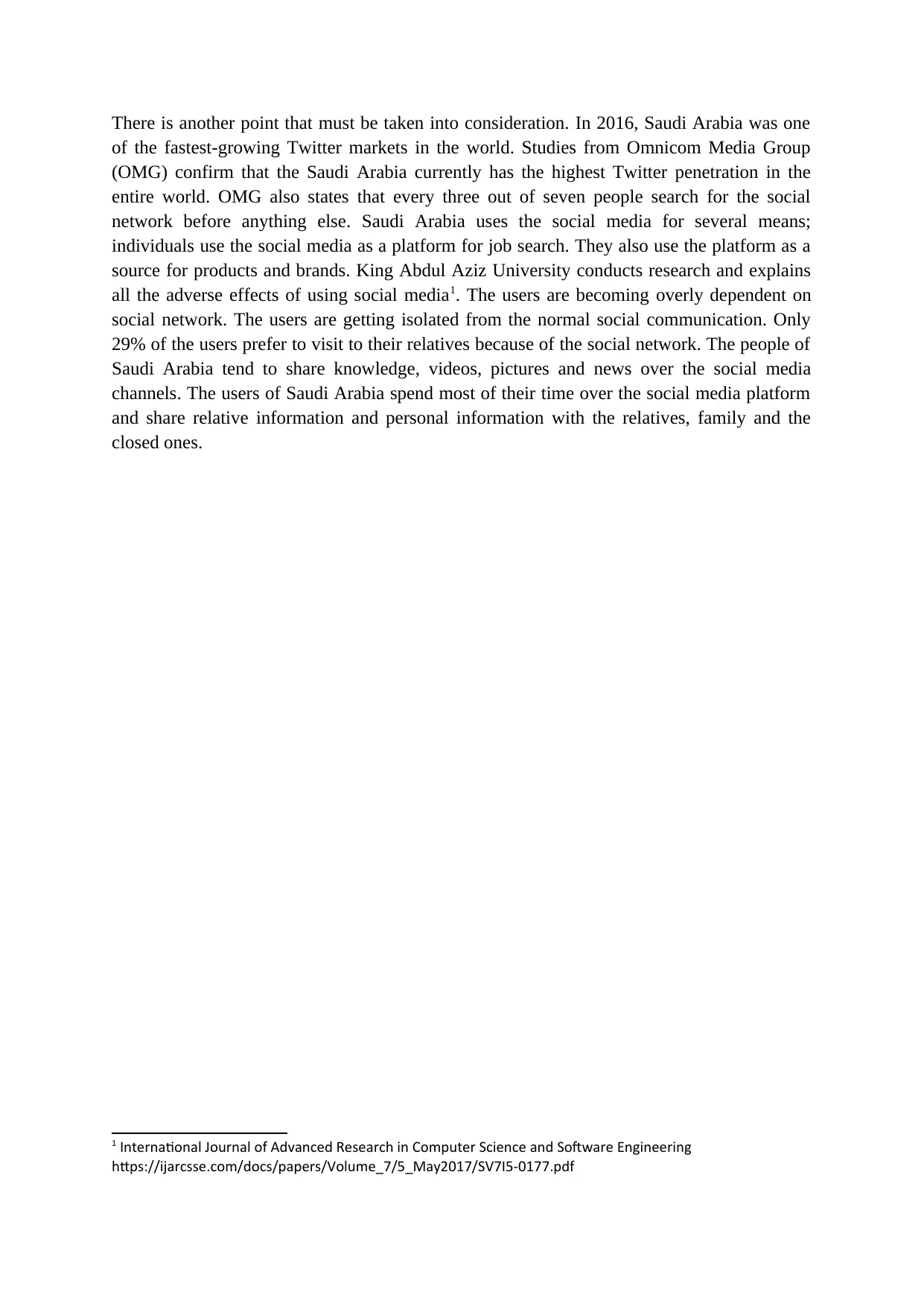Social Media Landscape of Saudi Arabia: Trends, Usage, Impact
VerifiedAdded on 2023/06/11
|3
|854
|447
Report
AI Summary
This report examines the prevalence and impact of social media in Saudi Arabia, where smartphone and internet usage are exceptionally high. With a significant portion of the population actively using platforms like Facebook, Twitter, WhatsApp, and Instagram, Saudi Arabia stands out as one of the most engaged countries in the Middle East regarding social networking. The study highlights how social media serves not only as a tool for entertainment, communication, and business but also as a catalyst for social change, with government entities leveraging these platforms to connect with citizens and promote reforms. Furthermore, the research acknowledges both the positive aspects, such as increased freedom of speech and access to information, and the negative consequences, including potential over-dependence on social networks and reduced face-to-face interactions, as identified by King Abdul Aziz University. This analysis underscores the complex relationship between social media and Saudi society, reflecting both opportunities and challenges in the digital age. Desklib provides access to this and other student-contributed assignments.
1 out of 3










![[object Object]](/_next/static/media/star-bottom.7253800d.svg)